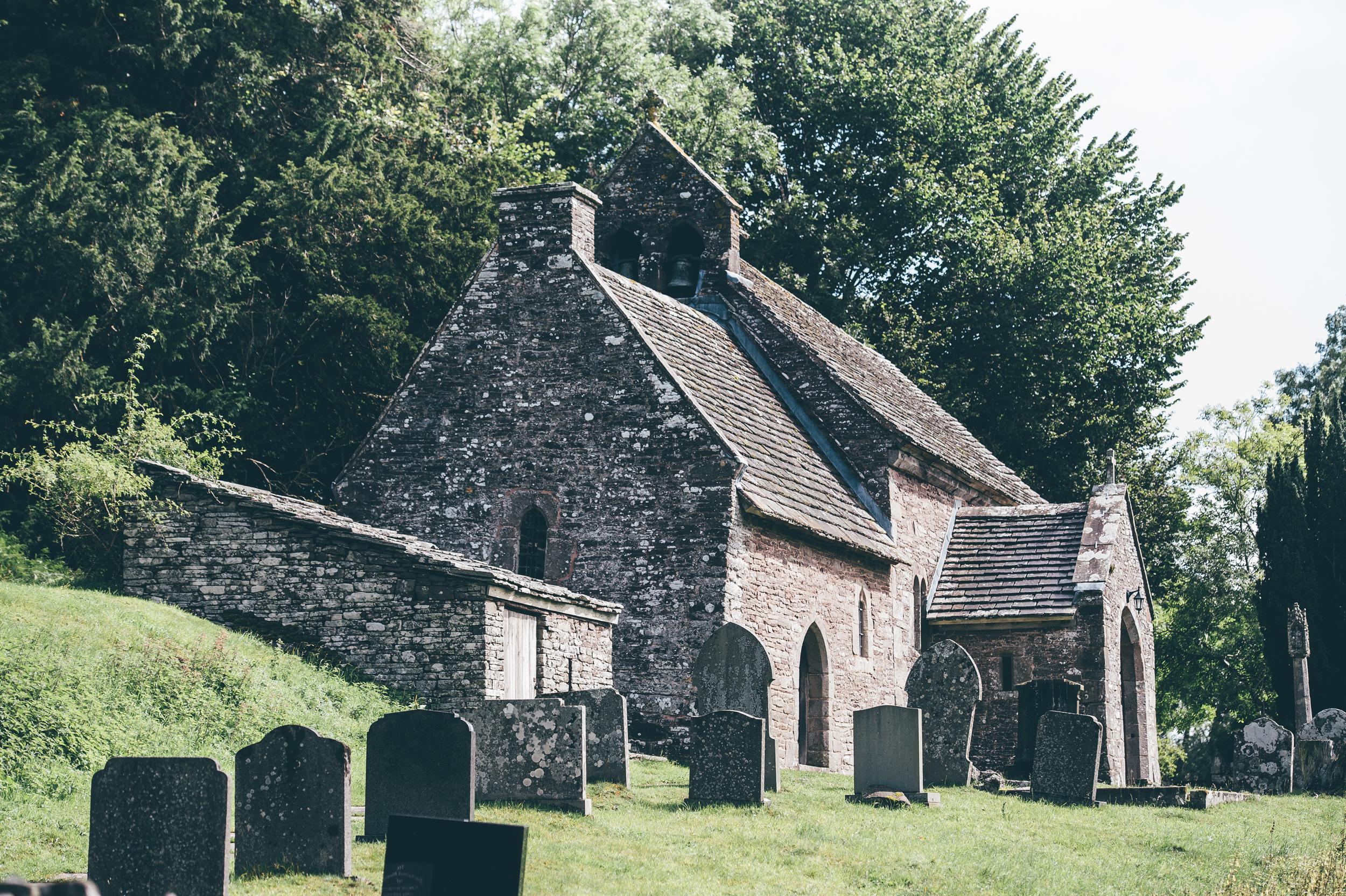St Martin of Tours
Cwmyoy, Monmouthshire
You can catch glimpses of Cwmyoy's 13th century church from the road as it winds up the Vale of Ewyas, and even from afar the leaning tower is very apparent.

Reached along tiny, winding flower filled lanes (or by footpath), this medieval church sits on a south facing slope looking over a tiny valley to the slopes of the Sugar Loaf mountain.
Patricio, Powys
In the 6th century an early Christian hermit named Issui, or Ishow, founded a cell here on a sloping hillside beside a stream. The stream fed a well from which the hermit drew water. You can still see the well, just a short walk downhill from the churchyard and easy to spot, with strips of colourful cloth tied to branches of nearby trees. The well is known as Ffynnon Issui (St Ishow's well).
The hermit's cell and the well became a place of pilgrimage after Issui was robbed and murdered by a traveller who asked for shelter but refused to be converted to Christianity by the holy man. Issui was probably buried within his cell. Pilgrims came to visit the saint's grave, and the well, which was reputed to have healing properties. In the middle of the 11th century a pilgrim left a sack of gold to help pay for a new church. The result was a simple stone structure, probably the size of the current nave. That early stone church was rebuilt in the 14th and 15th centuries, then again in the early 20th century.
Despite the rebuilding, a wealth of historic material remains, including a superb late 15th century wooden screen, made of Irish bog oak and intricately carved. The screen retains its loft, and the decorative carving on the loft is among the finest pieces of medieval art in Wales. It is said to have been made by Flemish craftsmen, but it is equally likely to have been made by skilled Welsh woodworkers. Look for figures of a fire breathing dragon, St Mary the Virgin, and St John the Apostle.
The font is dated to 1055, and perhaps the oldest in Wales. It bears an inscription that translates as 'Menhir made me in the time of Genillin'. Genillin may refer to the 11th century heir of Rhys Coch, Prince of Powys, or to a 7th century ruler of Powys named Cynddylan.
On the west wall is a Doom, or wall painting depicting the Biblical Day of Judgement. Even more impressive is the striking figure of Time, in the form of a skeleton, holding the traditional scythe and hourglass, as well as a spade. The meaning would have been clear, even to a largely illiterate population; your days are numbered, so use them wisely. According to legend, the painting has been covered with whitewash several times but each time it mysteriously reappears.
The church nave is probably Norman, but the chancel is 16th century. Leading off the west end of the nave is a 13th century 'chapel of the grave', or Eglwys y Bedd, erected over the grave of St Issui. The grave site is beneath the altar and is marked by a slab incised with six small consecration crosses, one more than the usual five crosses.
If you follow the steep lane down from the churchyard gate, you come to a small stone lined well set back from the road. This is traditionally said to be the well used by St Issui, and is credited with healing powers. A small tin cup allows you to stoop and draw clear water from the well.
Cwmyoy, Monmouthshire
You can catch glimpses of Cwmyoy's 13th century church from the road as it winds up the Vale of Ewyas, and even from afar the leaning tower is very apparent.
Llanthony, Monmouthshire
Priory of Augustinian canons founded early in the 12th century in the beautiful and secluded Ewyas valley.
Clodock, Herefordshire
This is a quintessential Borders church, built of red sandstone with a sturdy, castle like tower, and in a very rural setting. Its nave is Norman, the chancel a little later, and the tower later still.